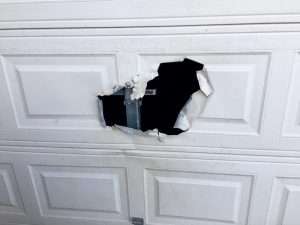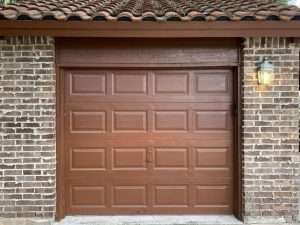Garage Door Reinforcement Strut FAQ’s
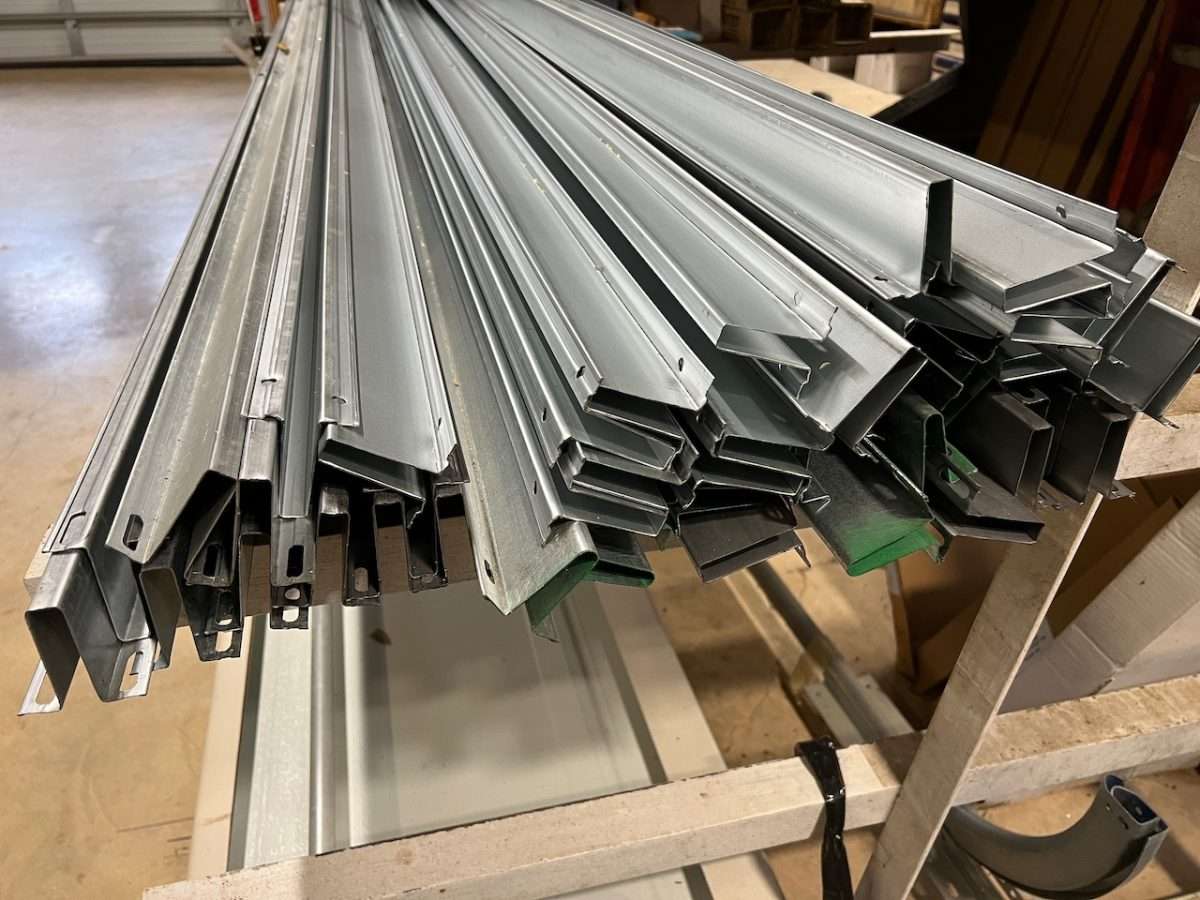
The garage door reinforcement strut is one of the most important parts on a garage door and often the most overlooked. Most homeowners we speak to don’t even know they have a strut on their garage door until we bring it to their attention.
The reinforcement strut is an indispensable repair part that can save customers hundreds, if not thousands of, dollars. In this article, we will answer common questions related to garage door struts and throw in some recommendations based on our experience.
What Is a Garage Door Strut Used For?

The most common use for a garage door strut is to reinforce the top section of a garage door. A top strut comes standard on all double car width garage doors, and it is an option to add on all single car width garage doors.
Reinforcement struts are also used extensively when repairing garage doors that have been hit or may be sagging due to age. A garage door “U” strut is specifically designed for garage door applications to transfer the load to the end stiles and rollers during operation.
Is the Garage Door Strut Needed?
Yes and no. A top strut is required on the top section of all double car width garage doors. Double car width garage doors over 18ft wide require two additional struts to be installed on a 7ft tall door.
Single car width garage doors only require a top strut if an automatic opener will be installed. This includes 8ft, 9ft, 10ft, 12ft, and 14ft width doors. We install top struts on all single car width garage doors because most homes will eventually have an automatic opener.
Does My Garage Door Need Reinforcement for the Opener?
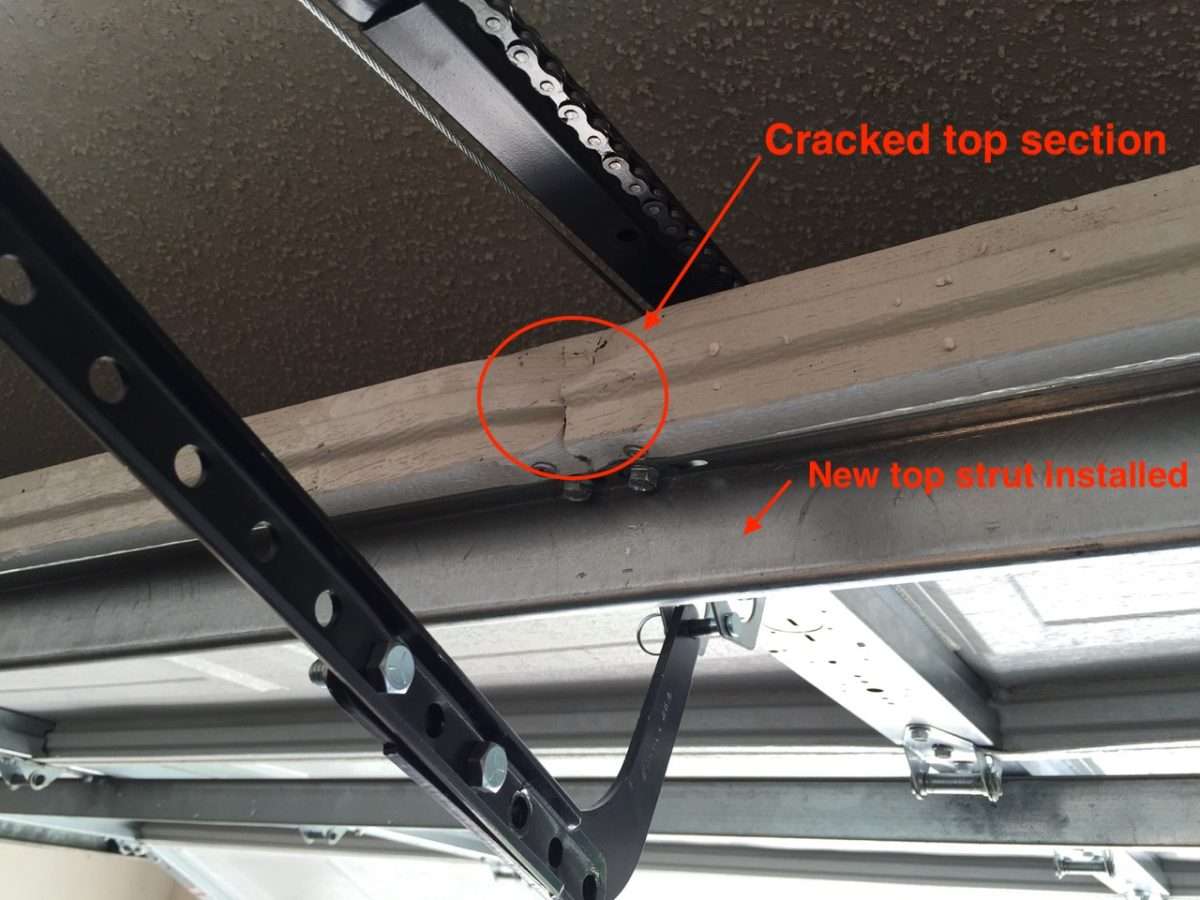
Yes. Any time you have an automatic opener installed on a garage door, it is required to have a top strut. While you may be able to get away with this for a while, eventually, the top section will start to generate a crack and sag, causing issues with closing.
Where Does the Strut Go on a Garage Door?
The first reinforcement strut is always installed on the top section of all double car width garage doors and all single car width doors with automatic openers. This is standard for a new garage doors.
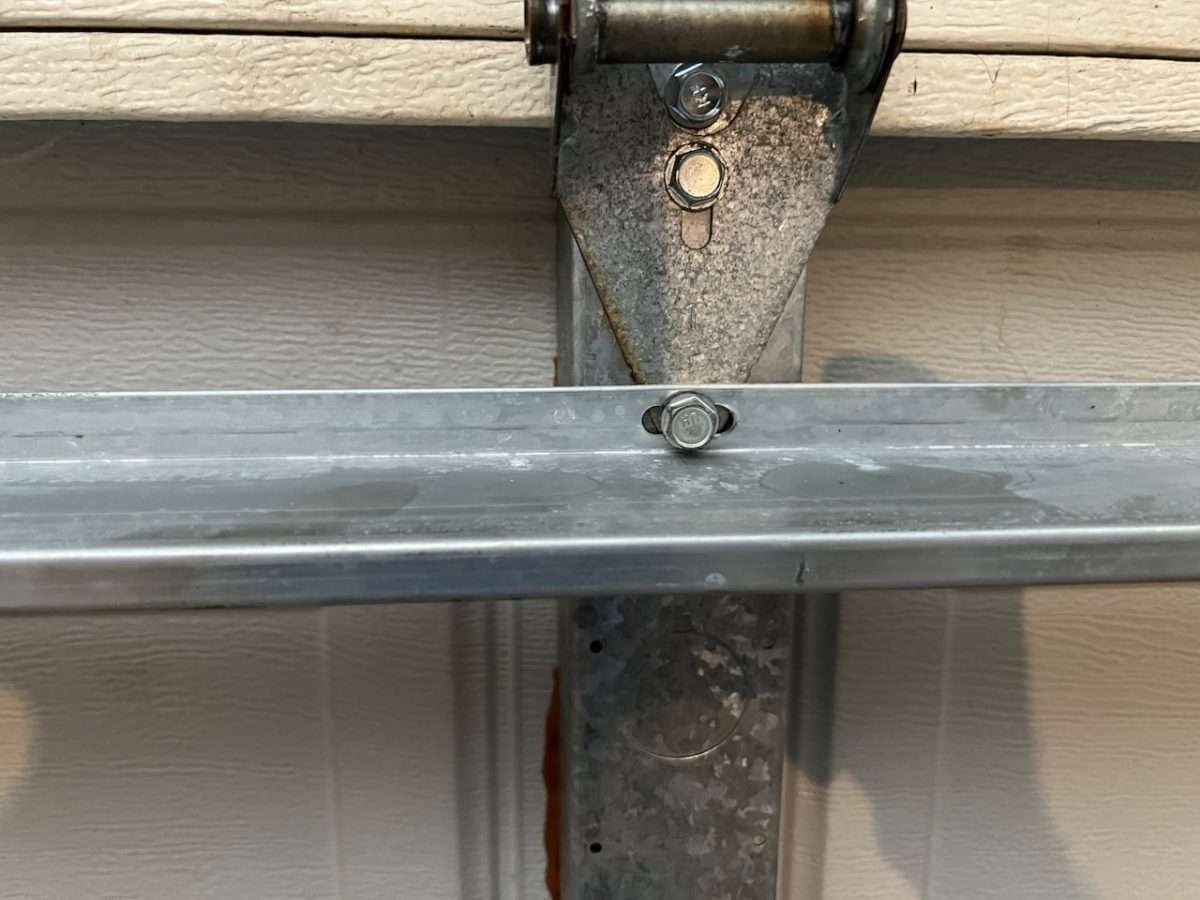
If you are repairing a garage door, always install a strut that spans the full width of the door section. The strut will normally be installed at the top of the section you are repairing, right under the hinge. This will help carry the weight of the section to the end hinges and rollers, which will keep the section straight during operation.
Reinforcement Strut for a Sagging Garage Door
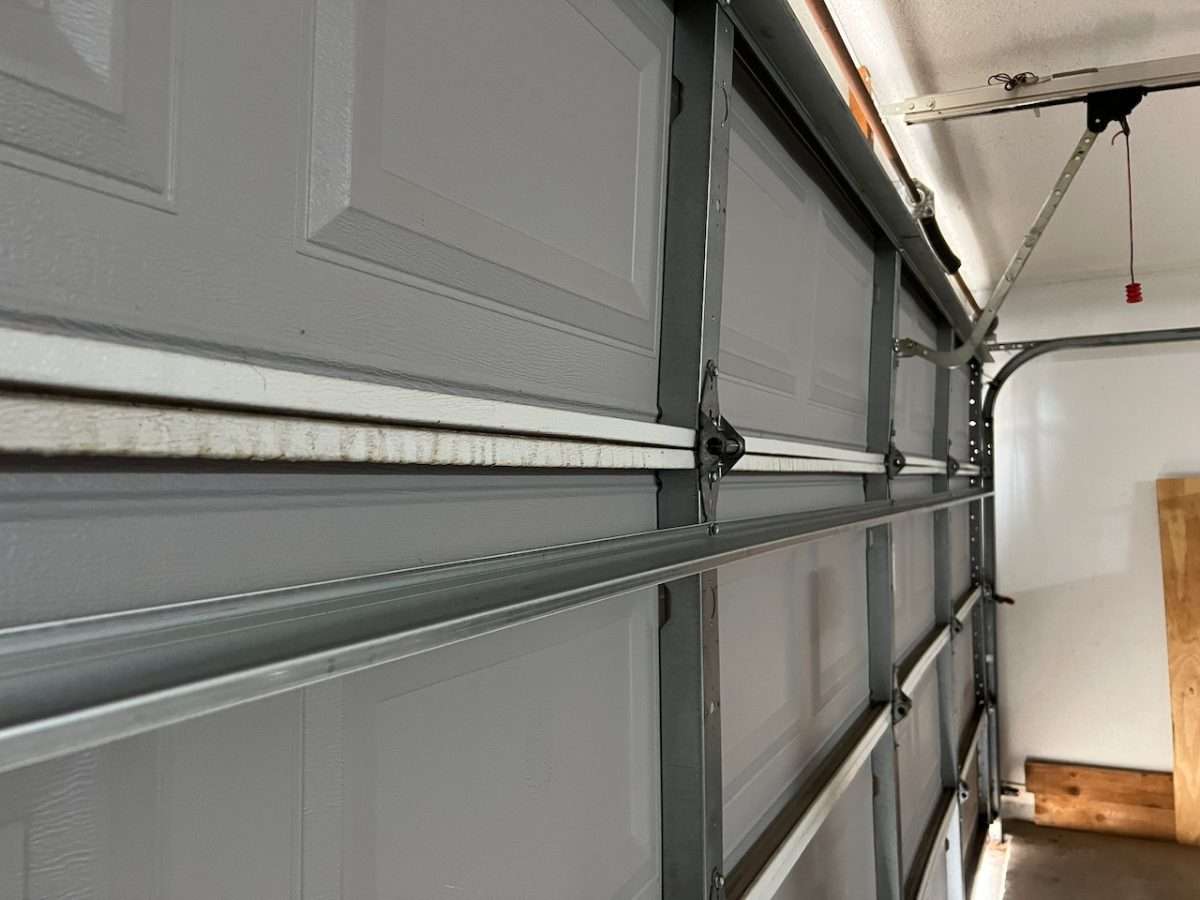
If your garage door is sagging in the middle, having a reinforcement strut installed could save you hundreds, if not thousands of dollars. This inexpensive part will extend the life of your garage door many years, especially if you’re able to source a 20 gauge strut.
Can I Use Punched Angle as a Top Strut?
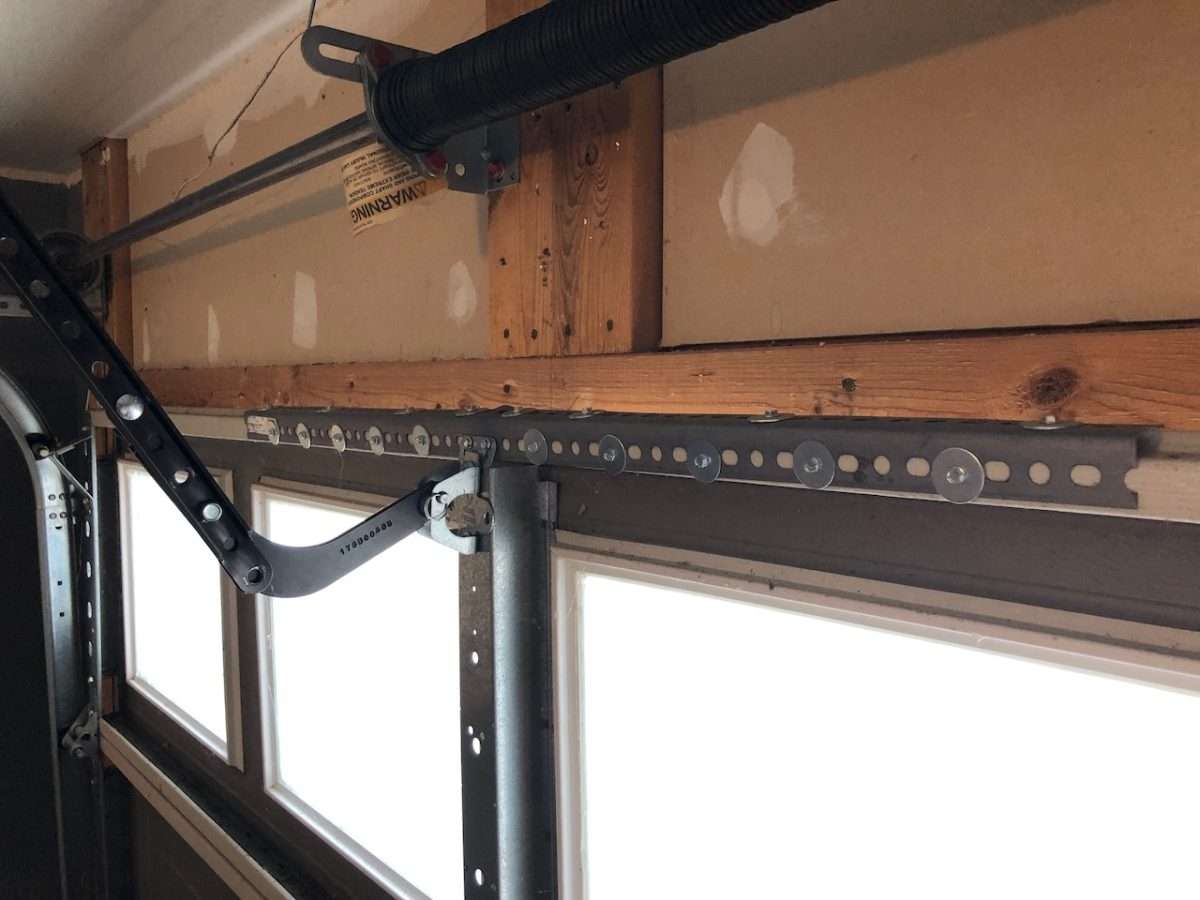
Yes. If you are having a hard time trying to locate a garage door strut, you can use a punched angle on the top section of an 8ft wide garage door. If you do choose to use angle, try to find at least 14 gauge, but 12 gauge would be best for strength and longevity.
A punched angle should not be installed in the middle of a double car width garage door section to reinforce it. We have seen on many occasions where homeowners will install an 8ft piece of angle in the middle of their 16ft garage door.
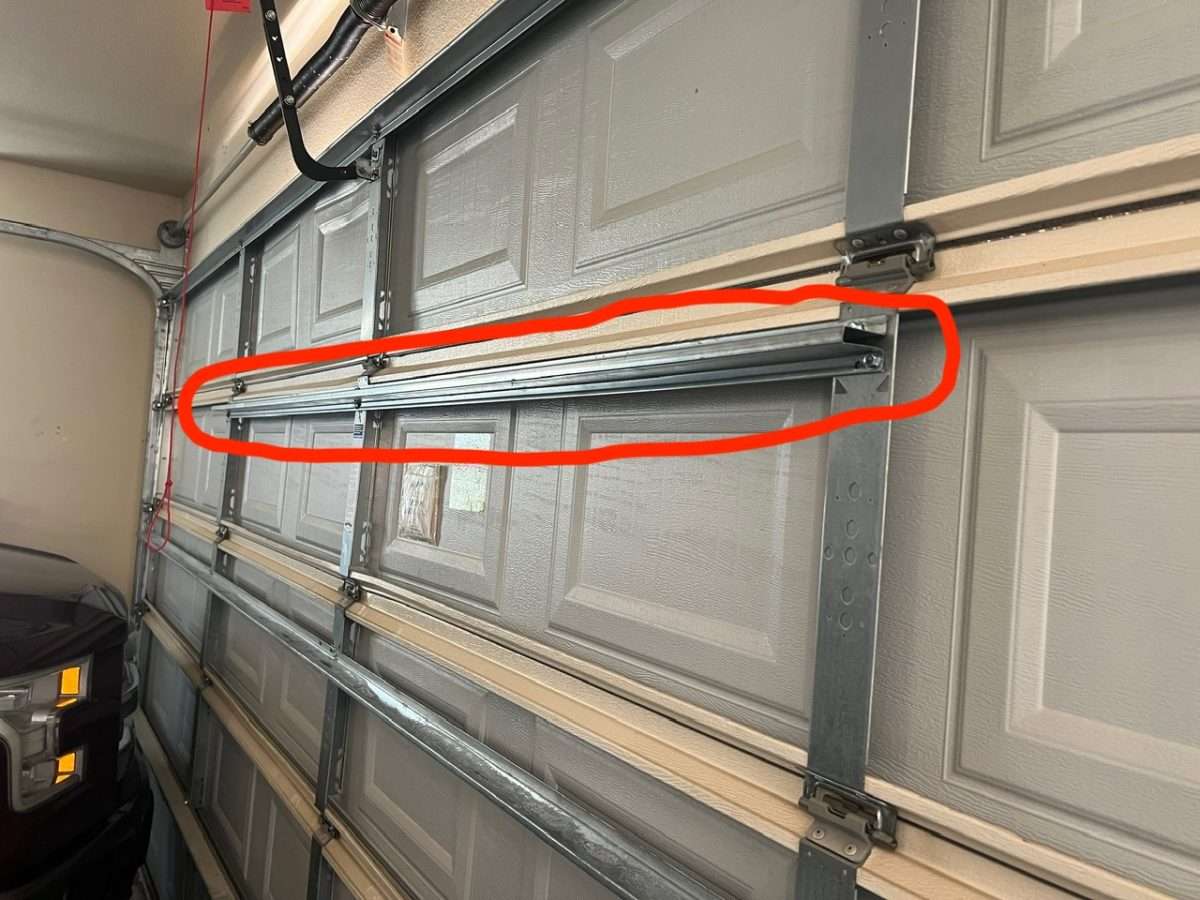
All you’re doing is adding additional weight to the center of the garage door section, which is going to cause it to sag even further. To properly repair a section, any reinforcement added to a garage door section should span the full width (end to end) of the section.
Full Reinforcement Struts on 18ft Wide Door
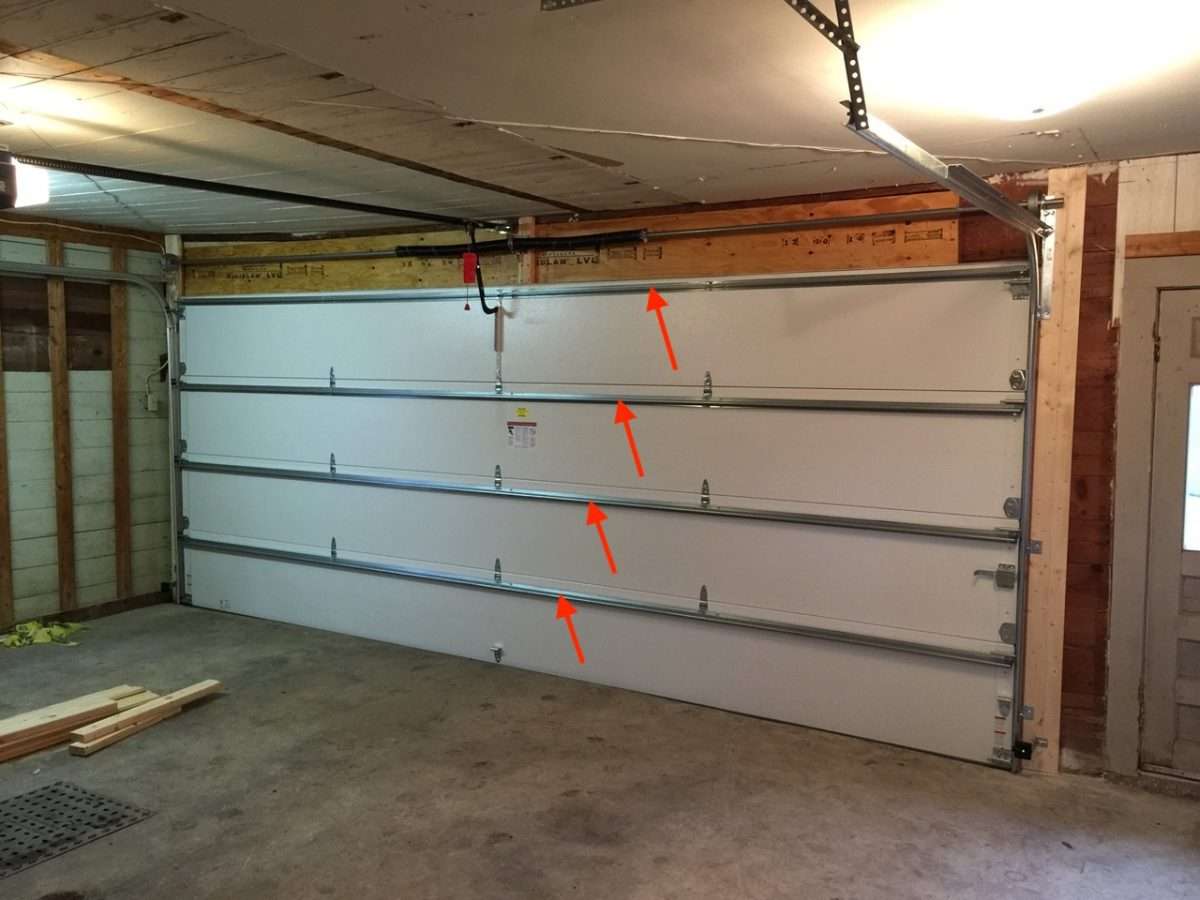
A basic 16ft wide by 7ft tall garage door comes standard with one top strut. When ordering a new garage door, you can request full struts for the door, which means every section will have a strut installed. This will prolong the life of your new door and dramatically increase its strength.
The industry standard for 17×7 and 18×7 garage doors is three struts to be installed on a garage door with four sections. Requesting one additional strut to be added will make sure every section is reinforced, which will extend the life expectancy of the sections.
How Long Do Garage Door Struts Last?
Garage door reinforcement struts can last many years, but it is dependent on the gauge of strut you purchase. While 20 gauge struts used to be the standard, today 22 gauge and even 24 gauge struts are becoming more popular because of the rising costs of metal.
If you are having a new garage door installed or trying to source a strut to repair your existing garage door, try to locate or specify 20 gauge struts. The difference in strength is dramatic, and 20 gauge struts will give you many more years of service over the thinner 22 gauge and 24 gauge struts.
How Many Struts Can You Install on a Garage Door?
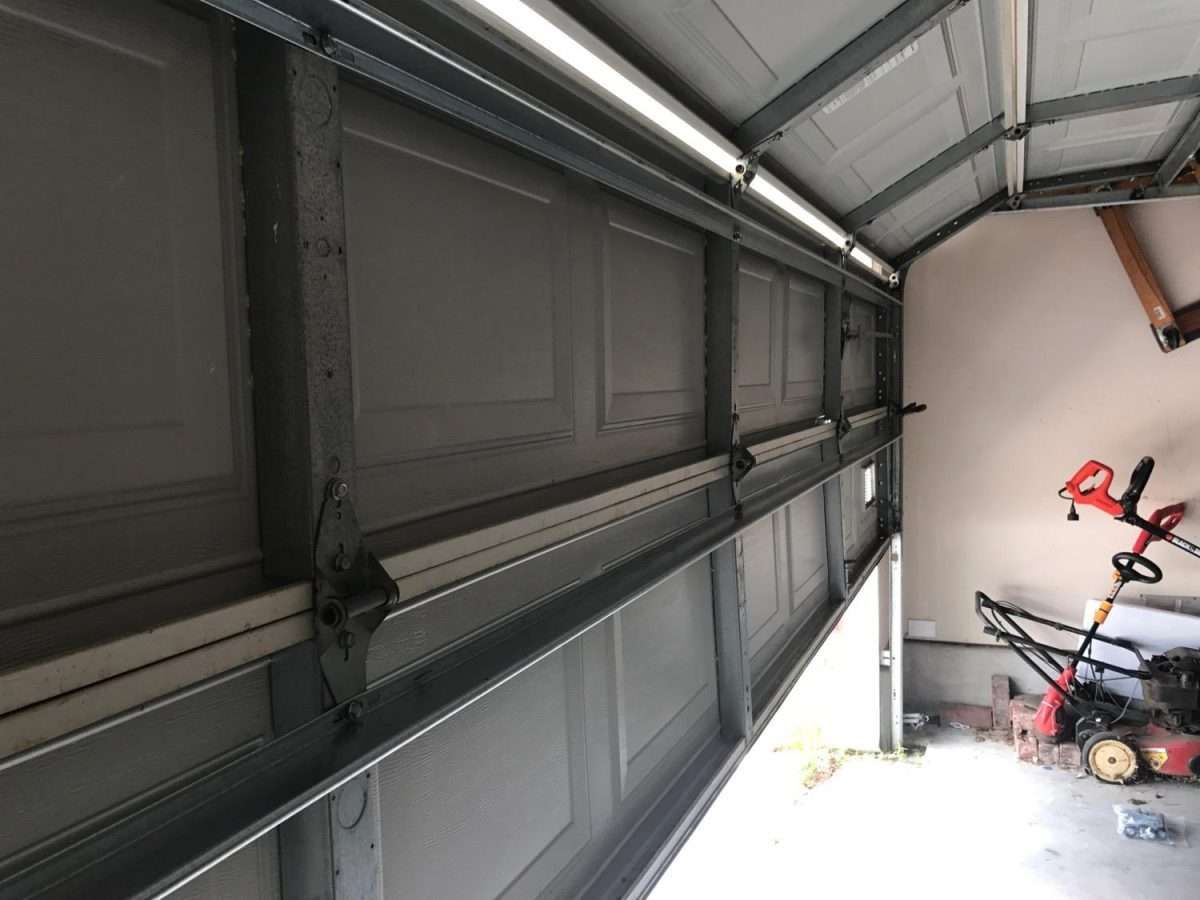
If you are repairing a garage door and need to add additional struts for reinforcement, a good rule of thumb is you can add two additional struts without having to replace the springs.
If your garage door feels heavy after installing the additional struts, you can have your springs adjusted by a garage door professional, so the door is more balanced for your automatic opener.
Where Can I Buy a Garage Door Strut?
Buying garage door struts can be tricky, especially when it comes to the longer lengths like 16 and 18ft. Home Depot and Lowes don’t generally sell reinforcement struts, and buying them online isn’t cost-effective due to their lengths.
If you intend to install a garage door strut yourself, your best bet is to find a local garage door dealer who sells parts to the public. Every city usually has a dealer with a physical front office and warehouse that will gladly sell you the part you need.
I have seen some multi-piece struts sold on Amazon.com, but I do not have any experience with these and don’t recommend going this route. Because a garage door strut carries a significant load, having a part that is one solid piece will guarantee longer lasting results.
Conclusion
The garage door strut is the unsung hero of the garage door world. It will never get as much credit as the almighty torsion spring, but it quietly carries the load and everyday stress put upon it.
Here are a few things to remember. First, try to source a 20 gauge strut if possible. Second, if you intend to use punched angle for the top section of your 8ft wide garage door, try to find 12 or 14 gauge metal if possible. The result will be many years of reliable service.


